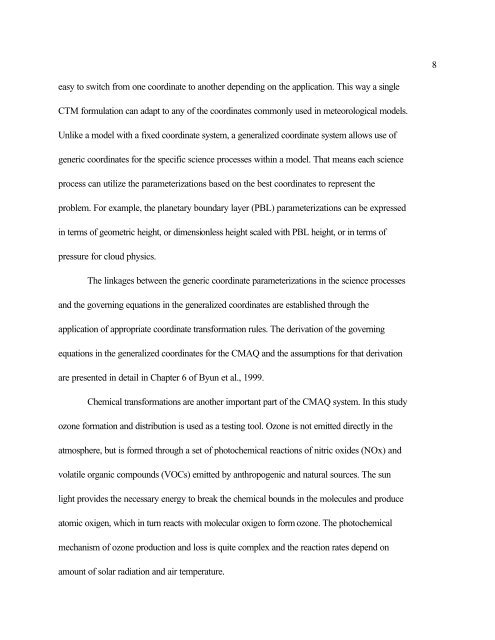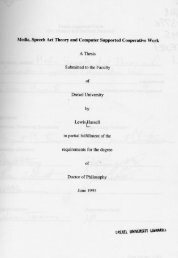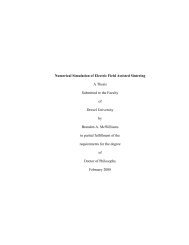Alternative small scale meteorology input to a chemical transport ...
Alternative small scale meteorology input to a chemical transport ...
Alternative small scale meteorology input to a chemical transport ...
You also want an ePaper? Increase the reach of your titles
YUMPU automatically turns print PDFs into web optimized ePapers that Google loves.
easy <strong>to</strong> switch from one coordinate <strong>to</strong> another depending on the application. This way a single<br />
CTM formulation can adapt <strong>to</strong> any of the coordinates commonly used in meteorological models.<br />
Unlike a model with a fixed coordinate system, a generalized coordinate system allows use of<br />
generic coordinates for the specific science processes within a model. That means each science<br />
process can utilize the parameterizations based on the best coordinates <strong>to</strong> represent the<br />
problem. For example, the planetary boundary layer (PBL) parameterizations can be expressed<br />
in terms of geometric height, or dimensionless height <strong>scale</strong>d with PBL height, or in terms of<br />
pressure for cloud physics.<br />
The linkages between the generic coordinate parameterizations in the science processes<br />
and the governing equations in the generalized coordinates are established through the<br />
application of appropriate coordinate transformation rules. The derivation of the governing<br />
equations in the generalized coordinates for the CMAQ and the assumptions for that derivation<br />
are presented in detail in Chapter 6 of Byun et al., 1999.<br />
Chemical transformations are another important part of the CMAQ system. In this study<br />
ozone formation and distribution is used as a testing <strong>to</strong>ol. Ozone is not emitted directly in the<br />
atmosphere, but is formed through a set of pho<strong>to</strong><strong>chemical</strong> reactions of nitric oxides (NOx) and<br />
volatile organic compounds (VOCs) emitted by anthropogenic and natural sources. The sun<br />
light provides the necessary energy <strong>to</strong> break the <strong>chemical</strong> bounds in the molecules and produce<br />
a<strong>to</strong>mic oxigen, which in turn reacts with molecular oxigen <strong>to</strong> form ozone. The pho<strong>to</strong><strong>chemical</strong><br />
mechanism of ozone production and loss is quite complex and the reaction rates depend on<br />
amount of solar radiation and air temperature.<br />
8






